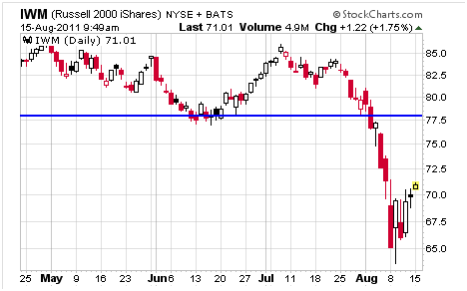Using a Bull Put Spread to Generate HighProbability Income
Post on: 27 Май, 2015 No Comment

By Zachary Scheidt on September 18, 2014
Option spreads can be a tremendous tool for generating high-probability income in your investment account. While the trade setups may take a little more thought and planning to implement, a spread approach to options can create a reliable income stream while keeping risk at an acceptable level.
Today, were going to explore a strategy known as a bull put spread, which is used to generate income from a stock or ETF in which we have a bullish bias. The trade benefits from time decay, adding income to our account, and limits our potential loss by taking offsetting positions.
Lets jump in and see how this income strategy works.
Setting Up a Bull Put Spread
To initiate a bull put spread, we sell one put option while buying another put option on the same stock with the same expiration date but a lower strike price. Since the put contract with the higher strike price will naturally have a higher option premium due to the fact that it is closer to or already in the money. this trade will result in a net credit. This means we are actually paid for putting this trade on, and the payment is deposited into our account immediately.
As long as the stock remains above the strike price of the short put, we get to keep the premium, as both options will expire worthless.
Now, if you are familiar with the standard put selling strategy. you know that if the stocks price is below the puts strike price on expiration, you will be assigned shares for that price. This can be a great way to purchase shares of a stock you are bullish on at a discount.
The downside of the put selling strategy is that if the stock continues to decline, losses can mount. With a bull put spread, on the other hand, the maximum loss will be the difference between the two strikes less the premium received for setting up the trade.
If the stock is between the two strikes at expiration, both puts will expire worthless and we would be in the same position as if we had just sold a put, buying shares at the strike price. Our cost basis would actually be lower than that as we would subtract the premium we received. From this point, we will need to manage our stock position and determine whether to sell it, hedge it or simply allow it to run.
In the case that the stock continues to decline past the strike price of the long put, we will still be assigned shares, but the long put will be in the money and offset the losses in the stock position. While this scenario would still result in a loss, that loss will never be more than the difference between the strike prices minus the premium we received.
Obviously, spread trades work best when our bias is correct. But the beauty of this approach is that our maximum loss can be capped, helping us protect our capital while earning income for our investment account.
Note: If youre interested in using options to generate reliable income, my colleague Amber Hestla has closed 66 straight winning trades using a put selling strategy. It doesnt get much more reliable than that! See her first 52 winners and learn exactly how you can make the same profitable trades by following this link.














